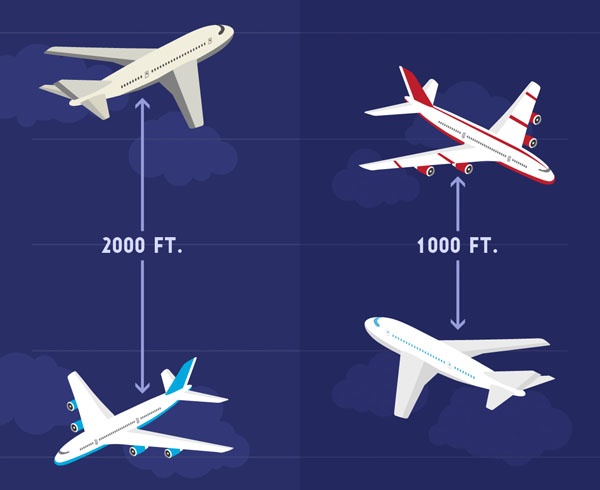
A change made years ago in the distances airplanes must keep from each other while aloft is enhancing the travel experiences of Cirrus Aviation clients.
Reduced Vertical Separation Minima, or RVSM, is unfamiliar to the general public. But since being implemented in the late 1990s and early 2000s, RVSM has benefited passengers and carriers in significant ways.
For safety reasons, the airspace between planes has long been regulated. As the skies grew crowded in the 1970s, particularly between North America and Europe, reductions in airspace distances to accommodate more traffic was inevitable.
Fortunately, improved technology made new airspace standards possible across the globe. Computers and autopilots now enable planes flying at altitudes between 29,000 and 41,000 feet to safely maintain vertical separation of just 1,000 feet. The previous minimum distance was 2,000 feet.
RVSM reduces flight delays by allowing more aircraft in any particular corner of the sky. Although charter carriers such as Cirrus Aviation have far fewer delays than commercial airlines, nearly 20 percent of all U.S.-based flights arrive late. That record would be much worse without Reduced Vertical Separation Minima.
RVSM has also facilitated cheaper fares through fuel savings. Today, pilots have more freedom to fly routes that are more direct and fuel-efficient.
Only aircraft outfitted with special altimeters and pilots who are specifically certified can take advantage of RVSM standards. All Cirrus Aviation pilots are trained to fly RVSM, and our fleet is RVSM-equipped.
Cirrus Aviation offers luxury jets, reasonable prices and the convenience of charter travel. Call 702-472-9714, anytime of the day or night, to talk to a knowledgeable customer representative about scheduling a flight.








